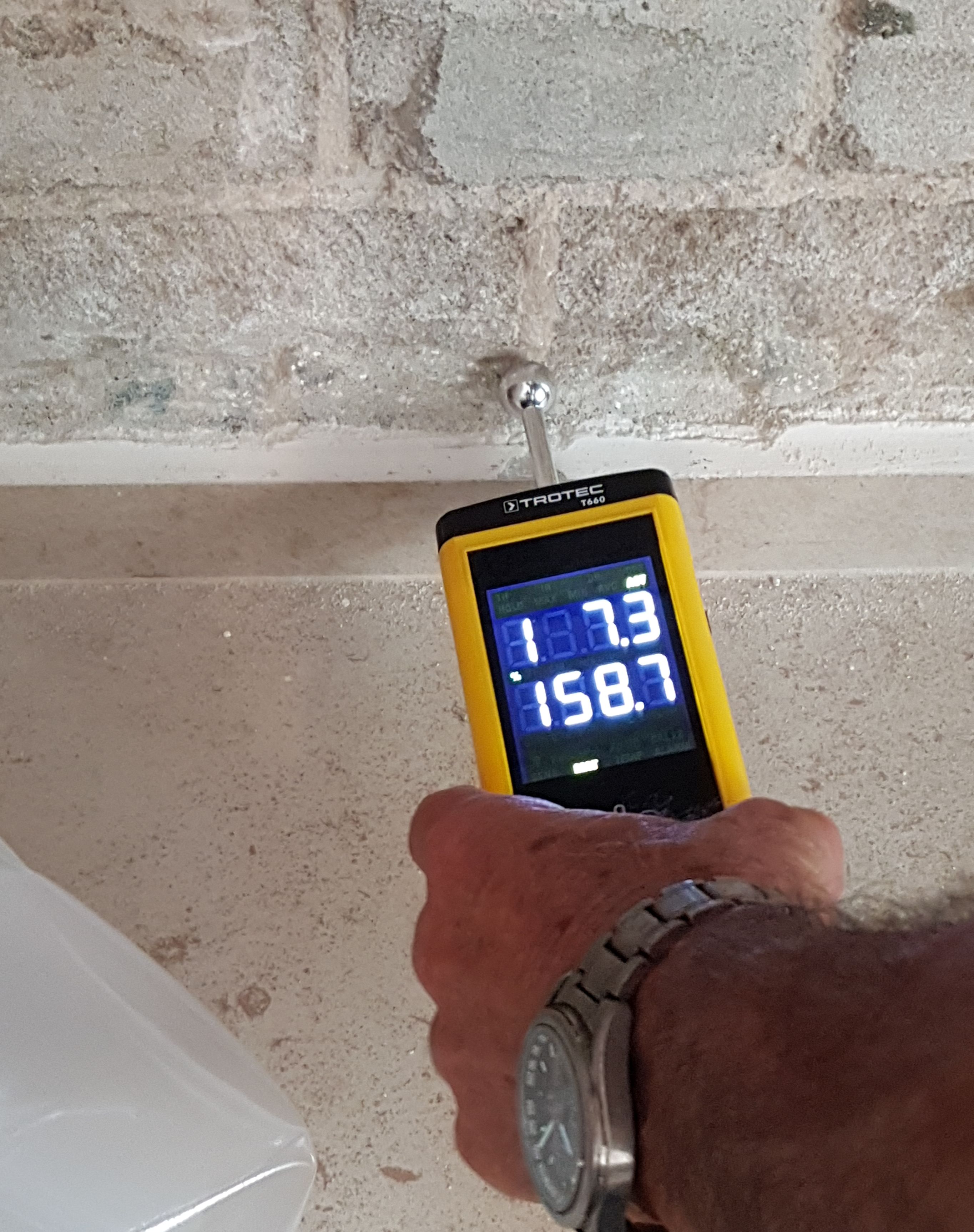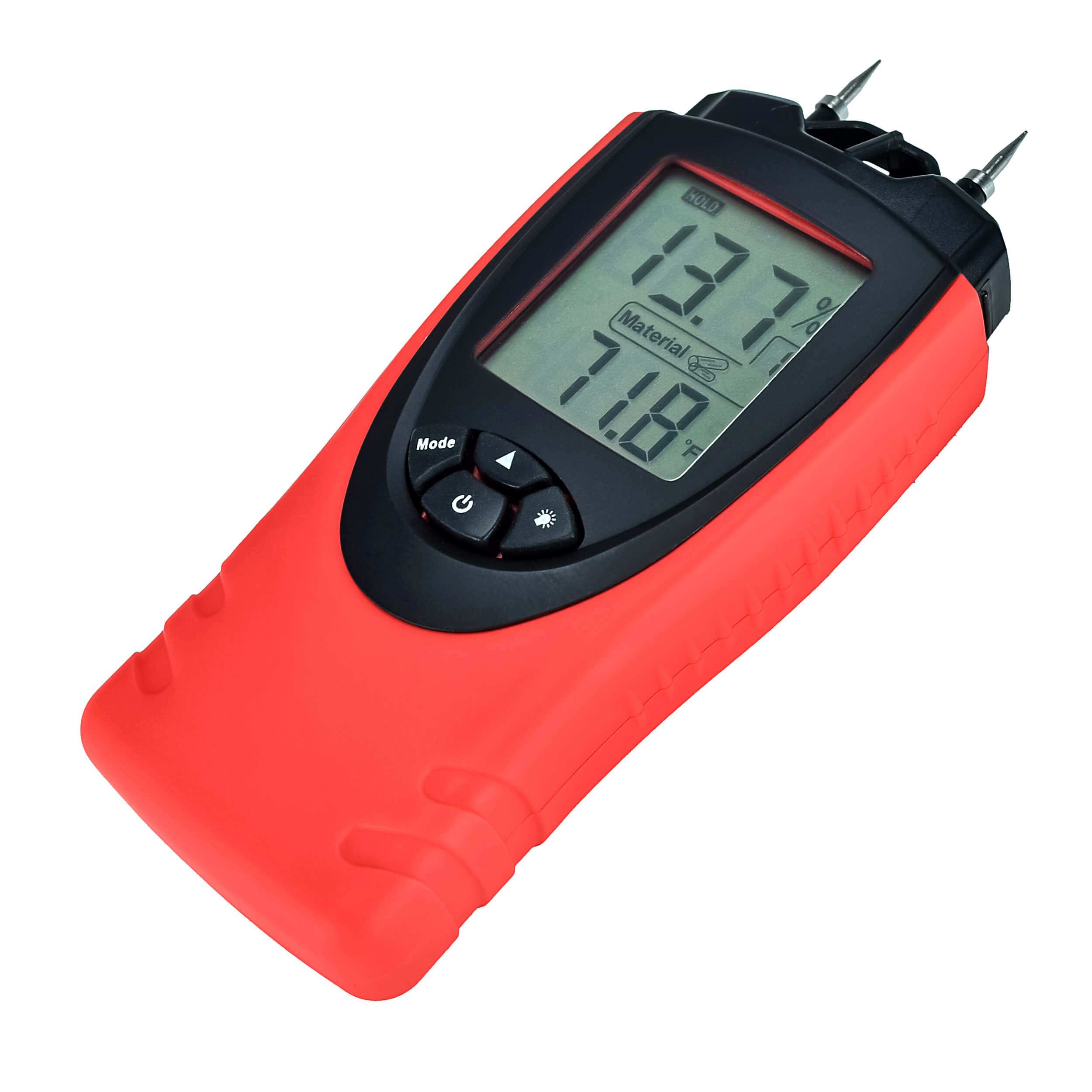The Scientific Research Behind Moisture Meters: Exactly How They Work and Why They're Crucial
The Scientific Research Behind Moisture Meters: Exactly How They Work and Why They're Crucial
Blog Article
Understanding the Relevance of a Moisture Meter in Avoiding Mold and Water Damages in Your Home
In the realm of home maintenance, the visibility of dampness can typically be a quiet yet powerful adversary, qualified of causing pervasive mold and mildew development and insidious water damages if left unchecked. Understanding the importance of a dampness meter in this fight is not merely an option however a tactical requirement.
Relevance of Moisture Detection
Reliable wetness discovery techniques are critical for protecting buildings and stopping possible mold and mildew development and water damages. Dampness can permeate right into various building materials, leading to architectural concerns and carcinogen. By using a moisture meter, homeowner can proactively determine areas vulnerable to excess wetness, enabling prompt treatment and mitigation approaches.
Moisture meters provide exact readings of dampness degrees in various products such as drywall, wood, and concrete. This data aids in identifying locations of concern, even in hard-to-reach or hidden locations. Early discovery of moisture accumulation makes it possible for prompt repair services or modifications to avoid more damages.

Just How Moisture Meters Work
Wetness meters play a critical role in the aggressive identification of excess wetness, assisting in the avoidance of possible mold development and water damages by offering precise analyses of dampness degrees in numerous building materials. These tools work based on different concepts, relying on their type. Moisture Meter. Pin-type wetness meters, for example, have two pins that pass through the material to determine the electric resistance between them. When dampness is existing, it improves the material's conductivity, causing a reduced resistance reading. Pinless wetness meters, on the various other hand, use electro-magnetic sensing units to check the material without causing damage. These sensing units discharge electro-magnetic signals that pass through the material and measure the dielectric buildings, showing moisture content. Some progressed wetness meters incorporate both pin and pinless technologies for comprehensive wetness discovery. Understanding just how moisture meters function is important for accurate and prompt dampness degree analyses, enabling reliable preventive measures against mold and mildew and water damages.
Detecting Early Caution Indicators
Upon preliminary examination of a residential or commercial property, acknowledging refined signs of excess moisture ends up being vital in the early discovery of potential mold growth and water damages. Water stains can signal leaks or seepage, while peeling off paint or wallpaper may be a result of moisture endangering the adhesion of these products to the surface area. In addition, a rise in allergy signs or breathing concerns amongst passengers might suggest the existence of mold and mildew due to excess dampness.
Stopping Mold Growth
Identifying early caution signs of excess wetness within a building not only makes it possible for timely detection of prospective mold and mildew development and water damage yet additionally serves as a proactive action in protecting against the spreading of mold. sites To properly prevent mold development, it is essential to address any sources of moisture without delay.
Along with addressing moisture resources, keeping interior moisture degrees listed below 60% can substantially inhibit mold development. Correct ventilation, adequate insulation, and making use of a/c unit or followers can help control interior moisture levels. Keeping track of dampness degrees in locations prone to dampness, such as basements and crawl spaces, using a dampness meter can likewise aid in very early detection of raised moisture degrees and possible mold and mildew growth. By taking positive measures to stop excess moisture and mold and mildew growth, homeowners can guard their property and interior air high quality.
Advantages of Routine Monitoring
Normal tracking of dampness degrees in a building can play an important duty in keeping a healthy indoor setting and stopping possible mold and mildew and water damage. By on a regular basis checking moisture levels, house owners can find any concerns quickly and take essential activities to stop mold growth and water damage. One of the essential advantages of routine surveillance is very early discovery. By determining and resolving high dampness levels beforehand, house owners can step in before mold and mildew has the opportunity to establish and spread out. This aggressive technique can save both time and cash in the lengthy run by stopping extensive mold and mildew removal and repair service expenses.
Additionally, normal surveillance allows home owners to track patterns and fads in wetness levels over time. Ultimately, the regular surveillance of wetness degrees encourages homeowners to shield their residential property, protect their wellness, and preserve the integrity of their interior atmosphere.

Final Thought

By utilizing a dampness meter, building proprietors can proactively determine areas prone to excess moisture, permitting for prompt treatment and click site reduction methods.

Keeping an eye on wetness degrees in areas prone to moisture, such as cellars and creep rooms, making use of a wetness meter can likewise assist in very early discovery of raised moisture levels and prospective mold growth. (Moisture Meter)
Report this page